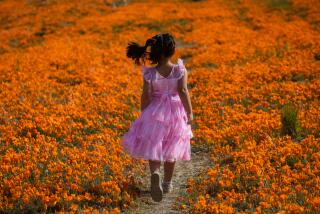Patch of California emerges from drought, experts say

After years of historically low rain totals and record-setting temperatures, California’s drought situation is looking ... less awful.
The latest evidence of this is a patch of southeastern California near Lake Havasu and the Colorado River. But if you want to see it on a map, you’d better take out a magnifying glass.
The area of the state that is no longer considered to be in drought, or even abnormally dry, is less than 1% of the state, according to the latest U.S. Drought Monitor report released Thursday. To be precise, the area encompasses .16% of the state.
That means the results represent a small victory. Very, very, very small.
“I would guess along the river you do have some folks living in that area. You’re impacting some retirement communities,” quipped Brian Fuchs, a climatologist with the National Drought Mitigation Center and author of this week’s U.S. Drought Monitor report. “It’s very minute.”
The percentage equates to about 262 of California’s 155,779 square miles of land, an area just a little bigger geographically than Chicago.
Still, it’s the first time since March 18, 2014, that any part of California was considered to be normal, precipitation-wise. Back then, only one one-hundredth of a percent of the state was in that category.
The new data show that an unseasonably strong monsoon season over the summer that pushed rain north to California and a series of powerful downpours in December are finally paying dividends, at least in some areas.
Experts saw improved vegetation and soil moisture in the northern and southern tips of the state. That chipped away, ever so slightly, at the area of California considered to be in severe and extreme droughts.
With an atmospheric river of warm, wet air forecast to bring several inches of rain across the Bay Area through Monday, Northern California could get another boost to help pull it out of the drought category. Such storms have broken 40% of California’s droughts since the 1950s, research shows.
“To see the [rain] intensity improve … that’s showing headway,” Fuchs said. “The opportunity for improvement is going to be there.”
Even Southern California could catch a break. Long-range forecasting by the National Oceanic and Atmospheric Administration shows Southern California getting slightly above-average rainfall in March and April.
But Fuchs cautioned that the storms are counter-balanced by above-average temperatures, a trend that’s spanned the last three years and is a large contributor to the region’s parched landscape and California’s situation as a whole.
Even the storm bringing welcome rain to the Bay Area this weekend is warmer than ideal, forecasters said. Meteorologists with the National Weather Service say snowfall isn’t going to drop below 8,000 feet, meaning the Sierra Nevada snowpack -- a valuable source of California water -- will not be padded as much as Fuchs and others would like.
“I guess we’ve got to hold back on some of the excitement and see how this precipitation develops and where it falls,” he said. “There’s still a deficit to make up.”
But as a silver lining, Fuchs said Californians have done a good job of managing their water use, especially considering there are 20 million more people in the state than in the 1970s, when California suffered through one of its worst droughts on record.
For breaking California news, follow @JosephSerna.
More to Read
Start your day right
Sign up for Essential California for news, features and recommendations from the L.A. Times and beyond in your inbox six days a week.
You may occasionally receive promotional content from the Los Angeles Times.







